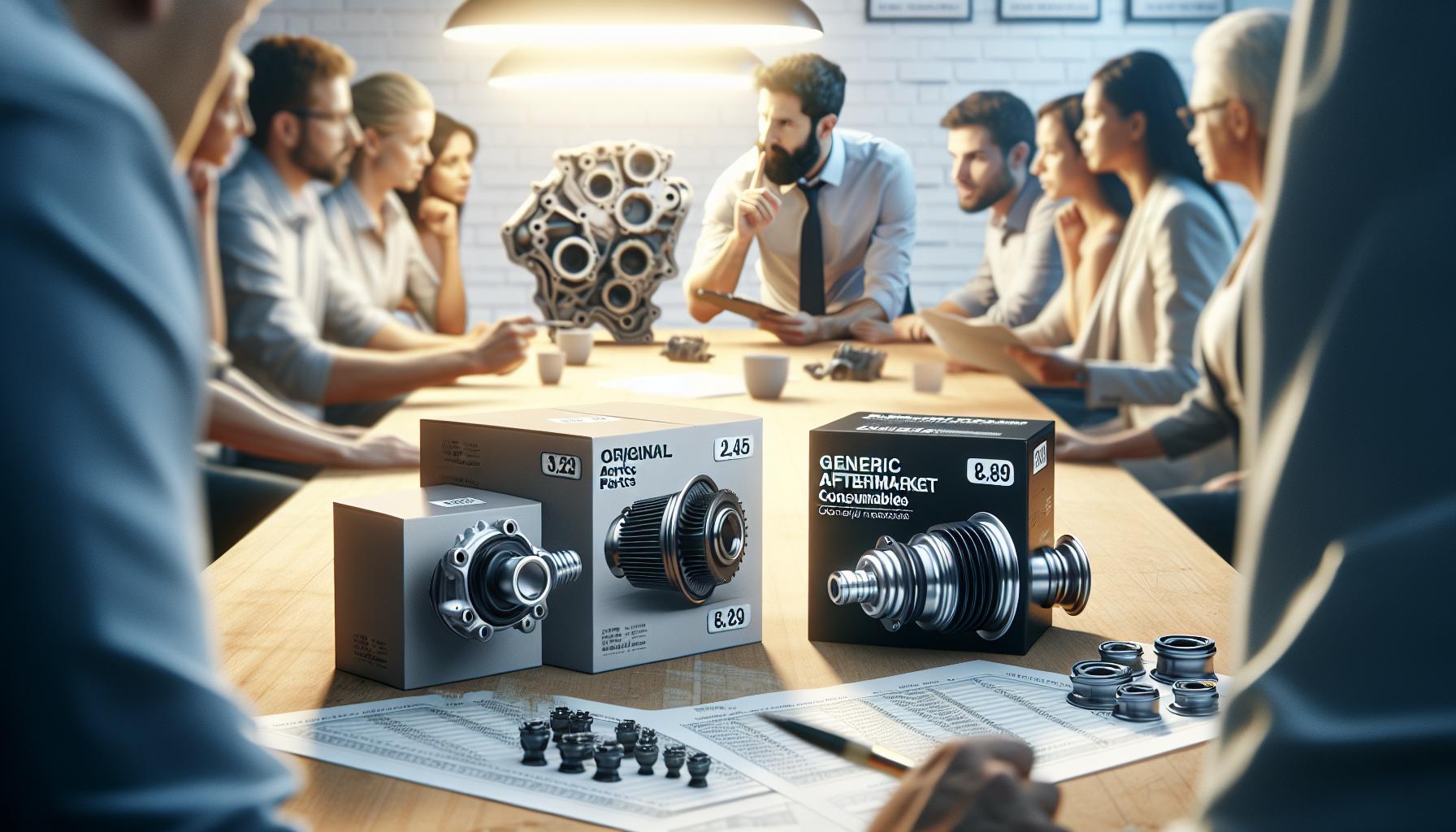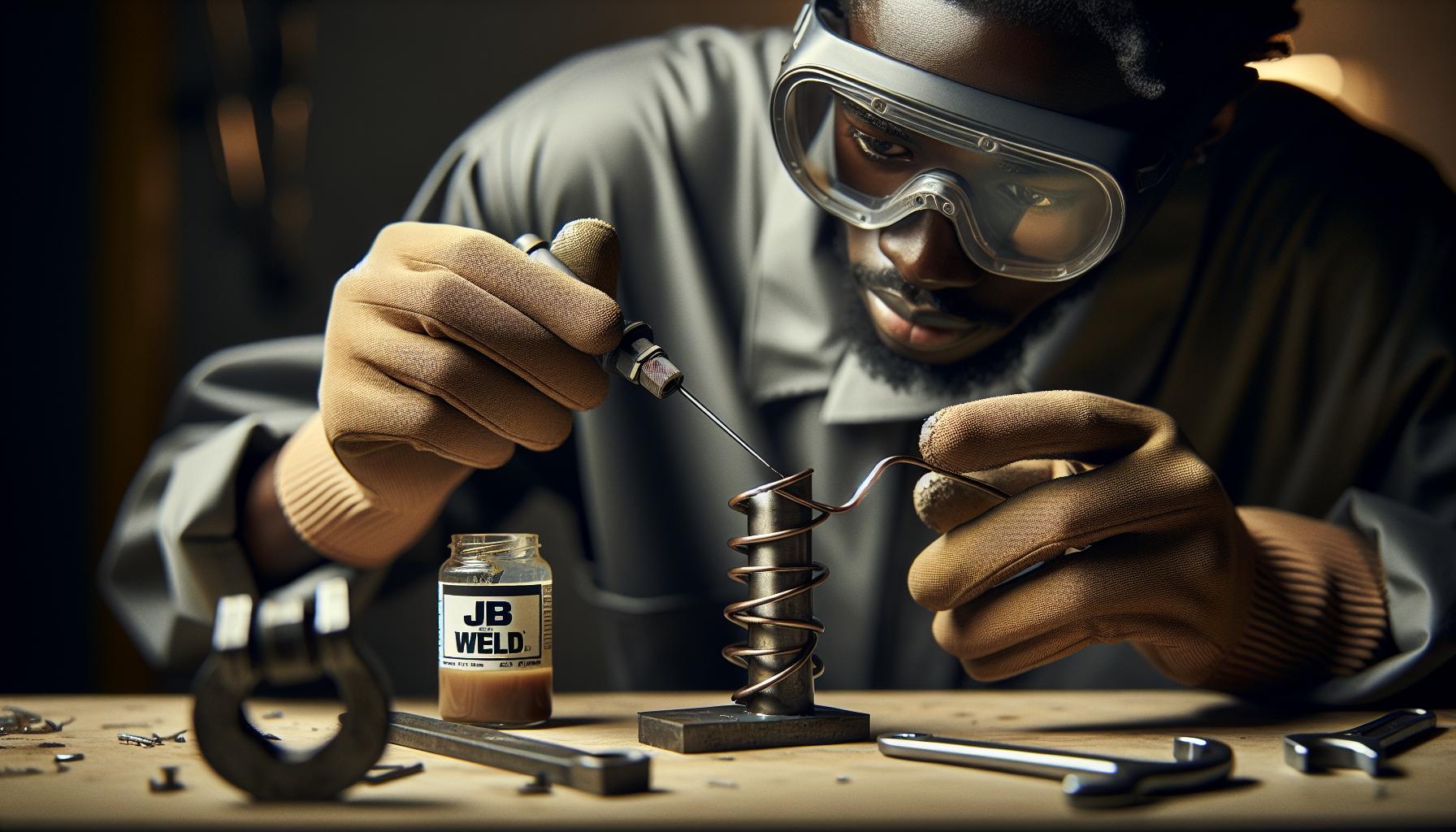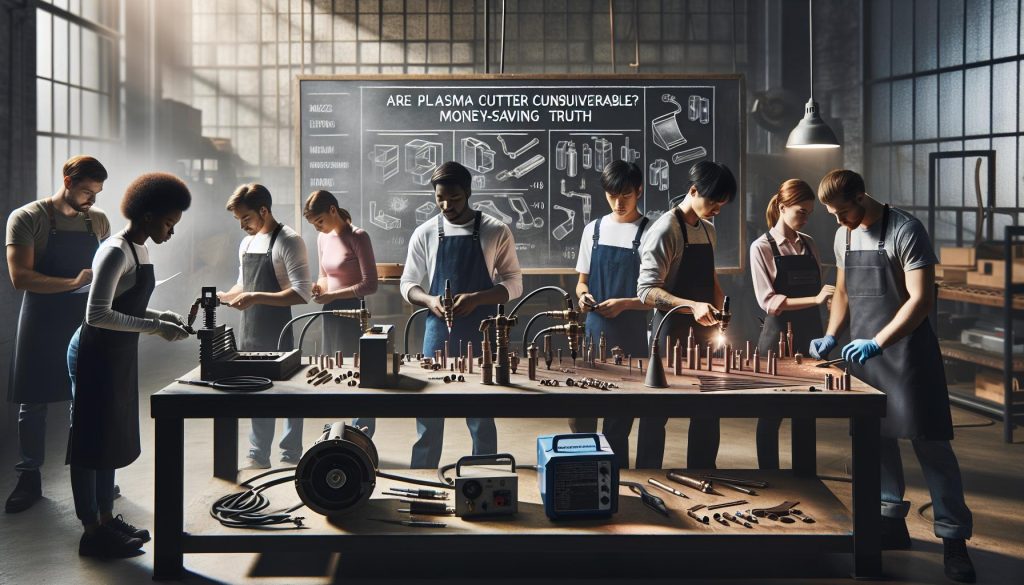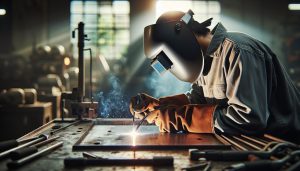Did you know that the right plasma cutter consumables can dramatically affect your cutting efficiency and costs? In the world of welding, understanding whether consumables are universal can save you significant expenses and time. This article delves into the nuances of plasma cutter components, clarifying compatibility among different machines. By exploring what makes certain consumables interchangeable-and where the pitfalls lie-you’ll gain valuable insights into optimizing your setup for both performance and budget. Whether you’re a novice or a seasoned pro, the knowledge gained here could streamline your operations and enhance your metalworking projects. Keep reading to uncover the truth about plasma cutter consumables and how they can impact your bottom line.
Are All Plasma Cutter Consumables Interchangeable?
When considering plasma cutter consumables, the question of interchangeability is crucial for both efficiency and cost-effectiveness. Not all consumables designed for plasma cutting systems are interchangeable, which can impact the quality of cuts and the overall usability of your equipment. Different plasma cutter models often have specific design requirements, meaning that the electrodes, nozzles, and shields meant for one model may not fit another, even if they appear similar. Additionally, manufacturers often design their consumables to operate optimally with their own machines, leading to variations in performance when using third-party or aftermarket consumables.
Choosing consumables that are not specifically designed for your machine can lead to several issues, including inconsistent arc stability, shorter lifespan of the components, and reduced cut quality. For instance, if the nozzle or electrode does not properly fit the torch, it may cause improper gas flow or cooling, which can result in poor cutting performance. Moreover, each manufacturer’s consumables undergo rigorous testing, ensuring that they meet safety and performance standards tailored to their particular systems.
When it comes to replacing consumables, it’s important for users to refer to their plasma cutter’s manual to identify compatible parts and avoid unnecessary complications. For example, consider the differences among various consumable types like #1, #2, and so on; these are not merely categorized based on size but often include nuances concerning the thickness of material they can effectively cut. A misunderstanding here can lead to overspending and dissatisfaction with results.
In summary, while it may seem appealing to interchange consumables from different manufacturers due to lower costs, the potential downsides often outweigh the savings. Investing in the right consumables designed for your specific plasma cutting system is essential for ensuring optimal performance and longevity of your equipment.
Understanding Different Plasma Cutter Consumables
Understanding the intricacies of plasma cutter consumables is essential for anyone looking to optimize their cutting operations. These components, although seemingly straightforward, play a pivotal role in achieving efficient and high-quality cuts. Consumables such as electrodes, nozzles, and shields each have distinct functions and specifications tailored to different machine models and applications. Understanding their unique roles and the materials they work best with can make a significant difference in performance and final results.
A plasma cutter typically employs several types of consumables, each serving a specific purpose:
- Electrodes: These are responsible for producing the arc that generates the plasma. The electrode’s material and design are crucial for ensuring consistent arc stability and resilience against wear.
- Nozzles: The nozzle focuses the flow of plasma and helps control the cut quality. Variations in nozzle design can affect the thermal dynamics and the precision of the cut.
- Shields: Shields protect the nozzle and electrode from spatter, prolonging their life and maintaining the performance of the plasma cutter.
Each of these components has specific compatibility requirements based on the plasma cutter’s brand and model. For instance, using a nozzle designed for one type of machine might fit physically but could lead to improper arc length or gas flow dynamics, drastically degrading cutting performance. Beginners should avoid the temptation to mix and match consumables without thorough research, as this can lead to inconsistent results and increased wear on the machine.
In addition to compatibility, the material type and function of each consumable directly influence productivity and quality. For example, if you are cutting thick steel, a nozzle with a larger diameter may be more suitable compared to a narrower one, which is better for thinner materials. Knowing the specific cutting capabilities and limitations of various consumables can assist users in making informed choices that enhance efficiency while minimizing costs.
Understanding these fundamental differences not only aids in selecting the right consumables but also helps operators to anticipate potential issues in their cutting processes. By investing time to comprehend the various components of plasma cutter consumables and their specific applications, users can achieve optimal cutting performance while making cost-effective decisions.
Cost Analysis: Original vs. Aftermarket Consumables
A comprehensive cost analysis of original versus aftermarket consumables reveals significant financial implications for plasma cutter users. While original equipment manufacturer (OEM) parts are often synonymous with quality and reliability, they come at a premium price. In contrast, aftermarket consumables typically offer lower prices but can vary widely in quality and performance. Understanding these differences allows operators to make informed purchasing decisions that align with their budget and cutting needs.
While OEM consumables might initially seem like a safe investment due to their tailored design for specific plasma cutter models, the overall cost-effectiveness can be questionable. For example, a pack of OEM electrodes can cost several times more than a comparable aftermarket option. However, if the aftermarket products do not perform as well, you may end up replacing them more frequently, negating any initial savings. Therefore, a more comprehensive cost-benefit analysis is essential.
When evaluating aftermarket consumables, look for well-reviewed brands that are known for maintaining quality standards. In many cases, reputable aftermarket manufacturers produce parts that match or even exceed OEM specifications, resulting in both cost savings and satisfactory performance. It is important to explore user testimonials and product comparisons to ensure that these alternative consumables can deliver reliable results without compromising the integrity of your plasma cutting operations.
Ultimately, the decision between original and aftermarket consumables shapes not only your budget but also impacts the efficiency and reliability of your cutting tasks. By investing in quality aftermarket options when available, you can optimize performance while minimizing operating costs. Just as importantly, being mindful of the specific requirements of your equipment and the materials you are working with will help you choose consumables that provide both performance and value.
Impact of Consumable Quality on Performance
The quality of plasma cutter consumables plays a crucial role in optimizing performance during cutting tasks. High-quality consumables, such as electrodes, nozzles, and shields, are engineered to provide superior arc stability and more efficient heat transfer, which significantly enhances cutting speed and accuracy. When using quality parts, operators often notice a cleaner cut with less dross, improved cut quality on various materials, and a reduced need for rework. This is particularly important when working with precision applications in materials like stainless steel, aluminum, or copper, where the integrity of the cut is paramount.
One key factor to consider is the design and material composition of consumables. For example, premium electrodes may feature advanced materials that resist wear and have better conductivity. This can lead to longer operational life and decreased downtime for replacements. Conversely, lower-quality alternatives may degrade quickly, causing inconsistent performance and potential damage to the plasma cutting torch. As a result, investing in higher-quality consumables not only enhances performance but may also reduce overall operational costs by minimizing the frequency of replacements.
Moreover, the performance of plasma cutting systems is affected by the thermal dynamics of the entire setup, where consumables serve as critical components. Poor-quality consumables can lead to overheating and increased maintenance needs, while those made to OEM specifications ensure that the cutting system operates within optimal parameters. With the right consumables, welders and fabricators experience better energy efficiency and precise control over the cutting process.
When choosing consumables, it’s essential to consider both the immediate cost and the long-term value they offer. High-quality options may present a higher upfront investment, but their enhanced performance often results in significant savings related to production efficiency and reduced material waste. Therefore, for both commercial and hobbyist applications, prioritizing quality in plasma cutter consumables can be a game changer, ensuring both profitability and high-quality outcomes in every project.
How to Choose the Right Consumable for Your Needs
Choosing the right consumable for your plasma cutter is pivotal not only for achieving the best cut quality but also for maximizing efficiency and minimizing costs in the long run. Given the wide variety of consumables available, including different types of electrodes, nozzles, and shields, understanding their specific applications and compatibility with your equipment is essential. Factors such as the material you are cutting, the thickness of the metal, and your cutting speed requirements should guide your selection.
When assessing consumables, consider the level of duty they will perform. For instance, if you frequently work with thick metals or need high levels of precision, investing in premium, manufacturer-recommended consumables can be beneficial. These items are designed to tolerate the high heat and stresses of intensive use, translating to improved performance and longer life. On the other hand, for occasional use or lighter jobs, generic options may suffice, allowing you to save costs while still getting the job done.
It’s also important to understand the technical specifications relevant to your specific plasma cutting torch. Each torch type may require specific sizes or designs of consumables, which means not all products are interchangeable, even if they seem similar. Check the manufacturer’s guidelines and compatibility charts. A mismatch could lead to suboptimal performance or even damage to your equipment.
Lastly, don’t overlook the experience and user feedback on consumables. Many forums and welding communities provide invaluable insights into which brands and types of consumables work best for different applications. Engaging with these resources can help you make informed decisions that align with both your cutting needs and budget constraints. By carefully evaluating each aspect of your plasma cutting consumable choices, you can enhance your cutting efficiency while minimizing operational costs.
Common Misconceptions About Plasma Cutter Consumables
Misunderstandings about plasma cutter consumables can lead to costly mistakes, inefficiencies, and unexpected downtime. One of the most pervasive myths is that all consumables are created equal and can be freely interchanged between different brands and models of plasma cutters. This misconception can result in subpar performance or even damage to the cutting torch, as each model has specific requirements regarding the design and quality of consumables. Using the wrong consumable may not only compromise the integrity of the cut but can also shorten the lifespan of critical components in the cutter itself.
Another common belief is that aftermarket consumables are always a suitable replacement for original manufacturer (OEM) parts. While some aftermarket options can perform comparably at a lower cost, their quality can vary significantly. Inferior materials used in cheaper consumables may lead to inconsistent performance, increased wear, and potentially dangerous situations, as these consumables are subjected to extreme heat and pressure during operation. For high-demand applications, sticking with OEM parts can provide assurance of reliability and safety.
Further complicating the understanding of plasma cutter consumables is the notion that more expensive parts guarantee better outcomes. While it’s true that higher-priced consumables often offer enhanced durability and efficiency, it’s essential to consider the specific requirements of your job. A skilled operator might achieve excellent results with lower-cost options when working on lighter materials or less demanding tasks. The key lies in matching the consumable’s characteristics-such as electrode material, design, and expected lifespan-with the job at hand.
To navigate these misconceptions, welders should invest time in researching and understanding the technical specifications of their plasma cutting systems. This knowledge will enable informed decisions that optimize performance and safety. Engaging in discussions with experienced operators and utilizing online forums can provide valuable insights and promote informed choices concerning consumables. By dispelling these myths, you set the stage for a more efficient and cost-effective plasma cutting experience.
Technical Differences: Electrodes, Nozzles, and Shields
Understanding the intricate roles of electrodes, nozzles, and shields is vital for optimizing the performance of your plasma cutter. Each consumable has a unique design and functions in a specific way to ensure a consistent and high-quality cut. Electrodes, the heart of any plasma cutting system, are responsible for generating the plasma arc necessary for cutting. Made of materials such as tungsten, their composition can greatly influence cutting performance and arc stability. Selecting the right electrode not only affects the cutting capacity but also the overall longevity of your cutting system.
Nozzles act as the channel through which the plasma flow is concentrated, directing it precisely at the workpiece. Different nozzle sizes are available, and their selection can depend heavily on the thickness of the material being cut and the type of cut required-whether it’s fine detail or heavy gauge. A well-chosen nozzle correlates directly with cut quality and efficiency; an improper fit can lead to increased dross and a rough finish.
Shields serve as a protective barrier that surrounds the cutting arc, helping maintain its stability and protecting both the operator and the equipment from harmful splatter and heat. The material and design of the shield can again vary among brands and types of plasma cutters, with some offering enhanced cooling features or improved visibility for the operator. Given that the shield can wear out due to the intense conditions of plasma cutting, it’s crucial to monitor its condition regularly to maintain safety and efficiency.
Overall, the technical differences between electrodes, nozzles, and shields underscore the importance of choosing appropriate, high-quality consumables specific to your plasma cutter. The consequences of using substandard or incompatible parts can be severe, leading to poor cutting performance, increased equipment wear, and safety hazards. Understanding these differences equips welders with the knowledge needed to select the best parts for their tasks and ensures their plasma cutting operations run smoothly and efficiently.
Maintenance Tips for Maximizing Consumable Lifespan
Maintaining plasma cutter consumables is essential for maximizing their lifespan and ensuring optimal cutting performance. One crucial factor in extending the life of consumables like electrodes, nozzles, and shields is proper usage and care during operations. Always ensure that the plasma cutter is set to the correct amperage for the material being cut; excessive amperage can lead to premature wear of consumables. Additionally, maintaining an appropriate distance between the nozzle and the workpiece prevents overheating and helps in achieving cleaner cuts, thus reducing wear on the consumables.
To further enhance the lifespan of plasma cutter components, implement a regular inspection and cleaning routine. After each use, it’s advisable to visually inspect the electrodes for signs of erosion or melting, which can indicate the need for replacement. For nozzles and shields, removing any built-up slag or debris using a soft brush can prevent blockage and improve airflow, which is critical for maintaining arc stability. Using compressed air to clean out the internal passages of the nozzle can also help maintain cutting efficiency.
Proper Storage and Handling
When not in use, store consumables in a clean, dry environment to prevent contamination. Keeping them organized in a dedicated toolbox minimizes the risk of damage and misplacement. Handle these components gently; dropping them can cause unseen fractures, leading to failure.
Lastly, investing in high-quality consumables can save money in the long run. Although generic or aftermarket parts may seem appealing due to lower prices, they often lack the same level of durability and performance as original manufacturer components. Doing so can result in increased wear and tear on your equipment and more frequent replacements, negating any initial savings.
By following these maintenance tips-proper usage, regular inspections, careful handling, and smart purchasing decisions-operators can significantly enhance the longevity and performance of their plasma cutting consumables, ensuring efficient and cost-effective operations.
When to Replace Consumables: Signs to Watch For
Recognizing when to replace plasma cutter consumables is crucial for maintaining cutting efficiency and reducing operational costs. Consumables such as electrodes, nozzles, and shields experience wear over time, and their performance can significantly impact the quality of your cuts. An important sign that it may be time to replace your consumables is a noticeable drop in cutting performance; if you find that your cuts are becoming more erratic or inconsistent, it’s often a clear indicator that the consumables are no longer up to the task.
Some specific signs to watch for include:
- Visual Wear: Inspect electrodes for erosion or pitting, as these imperfections can lead to arc instability.
- Excessive Slag: If you’re noticing increased slag accumulation on the cut edges, it may suggest your nozzle is worn and not directing the plasma flow effectively.
- Increased Missing Cuts: Difficulty completing cuts or having to apply more pressure or time to achieve the desired result can signal that your electrodes or nozzle need replacement.
- Out-of-Spec Cuts: If your cuts are not meeting dimensional tolerances or have rough edges, investigate consumable wear as a potential contributor.
It’s also advisable to implement a routine inspection schedule-after every significant project or at regular intervals-to assess the condition of your consumables. Keeping track of operating hours and usage intensity can help establish a baseline for wear, allowing you to anticipate replacements before performance impacts your work. Investing in high-quality consumables provides better performance longevity, ensuring that you are not only saving money in the long term but also enhancing your operational efficiency. Make replacement decisions based on observed performance rather than strictly on predetermined timelines to maintain consistent, high-quality results in your plasma cutting tasks.
Innovations in Plasma Cutting Consumables
The landscape of plasma cutting consumables is continuously evolving, with innovations that promise to enhance efficiency and reduce costs. One of the significant advancements in this field is the development of hybrid consumables that combine the strengths of various materials to improve durability and performance. For instance, some manufacturers are now producing electrodes made from advanced alloys that can withstand higher temperatures and increased wear. These new materials not only extend the life of the consumable but also improve the stability of the cutting arc, resulting in a cleaner and more precise cut.
Smart Technology Integration
Another noteworthy trend is the integration of smart technology into plasma cutter systems. Some newer models come equipped with sensors that monitor consumable wear in real time. This feature allows operators to receive alerts when specific components are nearing the end of their usable life, enabling timely replacements before significant performance drops occur. This proactive approach not only enhances cutting efficiency but also minimizes downtime, thus optimizing productivity on the shop floor.
Eco-Friendly Options
Furthermore, in response to increasing environmental concerns, manufacturers are also exploring eco-friendly consumable options. These products are designed to minimize waste and reduce the environmental impact of plasma cutting operations. For example, certain new nozzles and shields utilize recyclable materials or feature designs that allow for easier recycling at the end of their lifecycle, appealing to businesses looking to adopt more sustainable practices.
Performance Enhancements
Additionally, advancements in nozzle design, such as precision-engineered gas flow patterns, have been developed to improve cut quality and reduce slag formation. This optimization not only enhances the overall cutting experience but also contributes to cost savings by reducing the need for post-cut cleanup and finishing. With these innovations, users can achieve higher levels of detail in their work, allowing them to take on more intricate projects without compromising on speed or efficiency.
As the industry moves forward, it’s essential for operators and businesses to stay informed about these innovations. By embracing new technologies and higher-quality consumables, plasma cutting operations can become more efficient, cost-effective, and environmentally friendly.
User Experiences: Testimonials on Consumable Choices
While the world of plasma cutting consumables can often seem overwhelming, user testimonials reveal a wealth of insight into the nuances surrounding their interchangeability and effectiveness. Many operators share their experiences regarding the choice between original manufacturer parts and aftermarket alternatives. For instance, a fabricator working primarily with stainless steel reported that switching to aftermarket nozzles resulted in a noticeable increase in cutting speed and quality, while saving up to 30% on consumable costs. This highlights a crucial point: not all consumables are created equal, and performance may vary considerably based on the specific needs of a project.
Feedback often emphasizes the importance of matching consumables to the specific plasma cutting machine being used. A welder who frequently switches between tasks found that using non-compatible electrodes led to inconsistent cuts and increased downtime. Conversely, another user noted a significant improvement in arc stability and cut cleanliness after opting for an OEM nozzle specially designed for their model. This reinforces the idea that while aftermarket parts can offer cost savings, compatibility with the equipment is paramount to achieve optimal performance.
In addition to performance and compatibility, longevity plays a critical role in user satisfaction. Many have reported that investing in high-quality consumables-whether original or aftermarket-has extended usage life, thereby reducing overall expenses. A small shop owner recounted their experience with hybrid consumables that combined various materials for improved durability. They found that these hybrid options outlasted traditional consumables by nearly 50%, further translating into decreased downtime and greater productivity.
Ultimately, testimonials underscore the multiplicity of experiences within the plasma cutting industry. They illustrate that while some users prefer the security of original parts, others have successfully embraced aftermarket options with strategic research and careful selection. Whether optimizing for cost, performance, or both, the consensus is clear: informed choices lead to enhanced efficiency and profitability in plasma cutting operations.
Faq
Q: What types of plasma cutter consumables are available?
A: Plasma cutter consumables include electrodes, nozzles, and shields. Each type plays a crucial role in the cutting process, affecting the arc stability and quality of the cut. Understanding the differences can help you select the right components for your specific needs.
Q: How do I know if a consumable is compatible with my plasma cutter?
A: Check your plasma cutter’s manufacturer specifications for recommended consumables. Most brands provide a compatibility list. Additionally, ensure that the electrical and gas requirements match those of your machine for optimal performance.
Q: Are aftermarket plasma cutter consumables reliable?
A: Aftermarket plasma cutter consumables can be reliable but vary in quality. Research customer reviews and choose reputable suppliers. While they may cost less, ensure they meet safety and performance standards to avoid compromising cutting efficiency.
Q: How can I improve the lifespan of my plasma cutter consumables?
A: To extend the lifespan of your plasma cutter consumables, maintain proper settings and avoid using them at maximum capacity for extended periods. Regularly inspect and clean the components to prevent buildup that can shorten their life.
Q: What are the signs that I need to replace my plasma cutter consumables?
A: Signs to replace consumables include poor cutting performance, excessive spatter, or uneven cuts. If you notice reduced arc stability or a change in the cutting sound, it may indicate worn-out components needing replacement.
Q: Why is it essential to use the right plasma cutter consumables?
A: Using the correct plasma cutter consumables is vital for optimal cutting efficiency, safety, and quality. Incompatible or low-quality parts can lead to increased downtime, poor performance, and potentially damage your equipment.
Q: Can I use different brands of consumables in my plasma cutter?
A: While some plasma cutter consumables are interchangeable between brands, it’s essential to consult the specifications of both your machine and the consumables. This ensures compatibility and maintains cutting quality, preventing potential equipment damage.
Q: What maintenance tips can I follow to ensure my plasma cutting equipment’s longevity?
A: Routine maintenance includes keeping the cutting area clean, inspecting consumables regularly, and ensuring proper gas flow. Following the manufacturer’s maintenance guidelines also enhances equipment lifespan and performance.
Future Outlook
Understanding whether plasma cutter consumables are universal is crucial for both beginners and seasoned welders seeking cost-effective solutions. Remember, using the right consumables can significantly enhance your welding quality and efficiency. If you’re ready to save money without compromising performance, explore our detailed guides on MIG welding techniques and equipment reviews for optimal results.
Don’t forget to check out our related articles on welding safety protocols and best practices for working with aluminum and steel. Your next steps could include subscribing to our newsletter for updates on the latest in welding technology, or diving deeper into our product pages for top-rated consumables that suit your needs. Share your thoughts or questions in the comments below; we love hearing from our welding community! Together, let’s elevate your welding experience.












